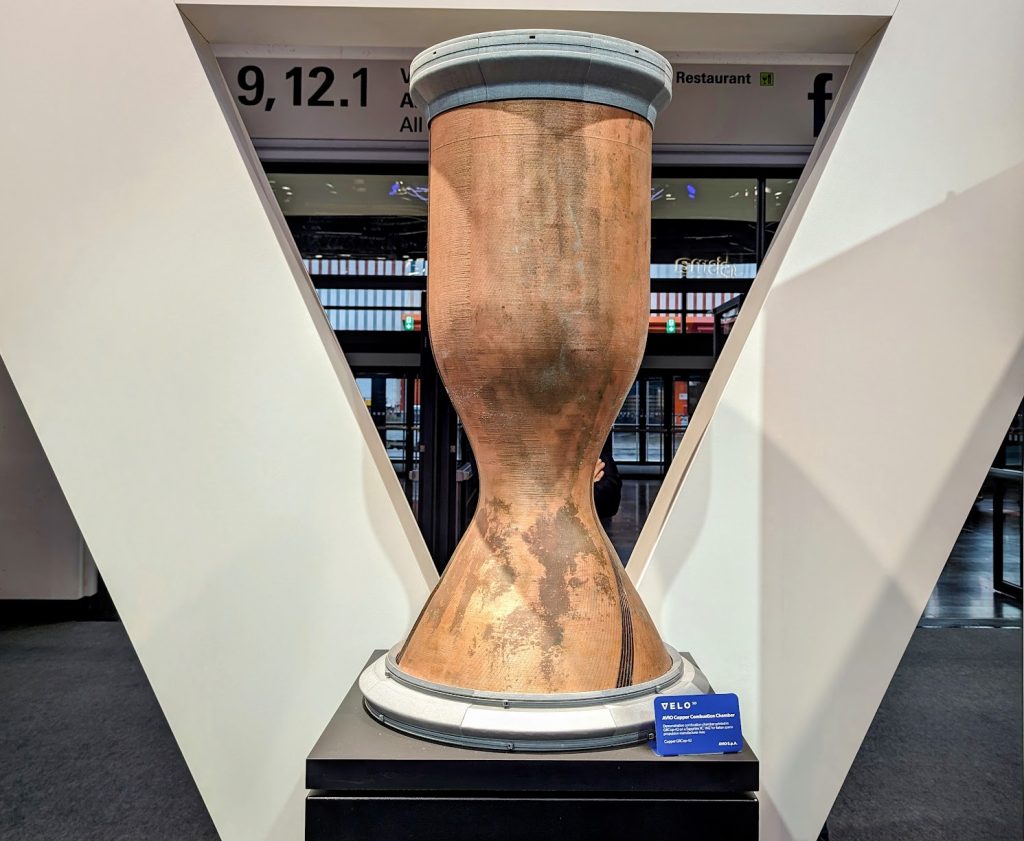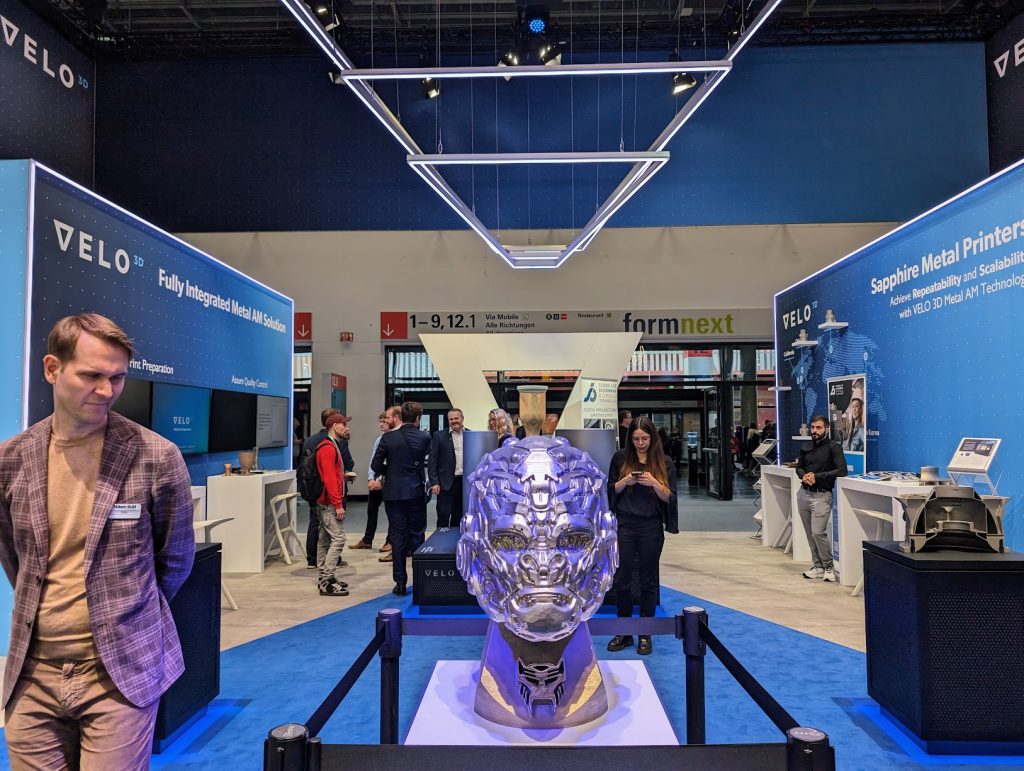In a recent conversation, Brad Kreger, the new CEO of Velo3D, shared comprehensive insights into the company’s trajectory, challenges, and strategic adjustments under his leadership. With a background in capital equipment manufacturing and experience in elevating startups to industrial scale, Kreger’s arrival at Velo3D was timed with the company’s rapid expansion phase, which necessitated a shift towards enhancing manufacturing processes, quality systems, and commercial strategies to sustain growth and address product reliability issues. He was initially appointed as Executive Vice President of Operations in December 2022.
Now CEO, Kreger was appointed interim in December 2023, after it was announced Benny Buller, the founder, would be stepping down at the board’s request after a prolonged period where Velo’s share price languished below a dollar.
Under Kreger’s initial stewardship, Velo3D has undertaken significant operational reforms to bolster product quality and refine its commercial execution. Notably, Kreger highlighted a focus on “quality improvements, winning in manufacturing processes” and a substantial percentage increase in its “quality organization” headcount by 40% in the fourth quarter to support this push. This focus on quality has been paralleled by efforts to optimize customer service, evidenced by a 45% reduction in time to resolve customer issues and improvements in installation times.
On the commercial front, the appointment of Michelle Sidwell as EVP of Sales in September 2023 marked a strategic pivot towards a value-led sales methodology, moving away from an engineering-led approach. This shift has yielded a more disciplined and ROI-focused customer engagement strategy, resulting in $12 million in bookings in the latter part of the year and a significant portion of repeat customers, underscoring the effectiveness of Velo3D’s enhanced customer satisfaction and retention strategies.
Kreger candidly acknowledged the pressures of 2023, attributing them to rapid growth and the need for better commercial execution. He stated, “2023 was a challenging time for us. We faced a lot of issues and challenges as a company.” He emphasized the transition from early adopters to a broader customer base necessitated a change in selling strategy, which was not fully anticipated.
Looking ahead, Kreger outlined a commitment to financial sustainability, with aggressive cost management measures leading to a 40% reduction in operating expenses. These measures and strategic leadership appointments have positioned Velo3D toward cash flow neutrality by the end of Q2’24. “We expect to be EBITDA positive by year-end,” said Kreger.
Read more in our Executive Interview series with 3D printing industry leaders.

Forget Transformers; what about the Rise of the Share Price?
And yet, despite all this seemingly good news, Velo’s share price refuses to budge. What does Kreger feel the market hasn’t grasped? “I think we’ve put a lot of confusing signals out,” Kreger admitted, highlighting the complexities of investor communications for a publicly traded entity like Velo3D. Kreger acknowledged the company’s past communication missteps and the challenges of conveying a comprehensive picture to investors, citing regulatory limitations and market reactions to financial disclosures.
Kreger further explained the discrepancy between market perceptions and the company’s reality, particularly around incidents like the announcement of a potential default, which stirred market anxiety. However, he clarified the situation’s resolution, where the lender’s reinvestment underscored confidence in Velo3D’s prospects. “Our lender…ultimately tuned back in and invested $5 million, so that they have confidence in us,” Kreger noted, suggesting a misalignment between market perceptions and the company’s operational health.
Addressing what the market misunderstands about Velo3D, Kreger pointed to the need for clearer communication about the company’s growth, market opportunities, and execution capabilities. He emphasized the importance of articulating a sustainable and profitable vision to investors, suggesting that better communication could align market perceptions with the company’s strategic direction.
Kreger also delved into the intrinsic challenges within the additive manufacturing sector, highlighting a common misconception about the ease of transitioning to 3D printing from traditional manufacturing methods. He argued that the initial belief—that objects could simply be transferred from conventional machining to 3D printing with ease—has proven overly simplistic. “I think that promise of 3D printing being something you just take what you machine before and you shove it in a 3D printer, and it just magically comes out is a bit proved out to not really be the truth,” he observed, underscoring the complexity and nuanced understanding required for effective additive manufacturing.
The conversation further explored the disparities in adoption success among Velo3D’s clientele, attributing variations to the level of engineering expertise and infrastructure available to different users. Kreger noted that while sophisticated clients with engineering teams thrive, others, such as machine shops lacking the necessary talent and support, face difficulties. This divergence underscores the essential ecosystem and learning curve associated with adopting more efficient, albeit complex, production processes in 3D printing. Kreger’s insights into Velo3D’s strategic direction and the additive manufacturing landscape at large reveal a cautious optimism, tempered by a realistic acknowledgment of the challenges and complexities inherent in the industry’s evolution.

Optimism for the Primes? Affirmation of key verticals
Kreger shared insights into the company’s strategy for targeting market verticals and the reassessment of its addressable markets. The CEO.underscored the importance of aligning with sectors where Velo3D’s technology and capabilities can be most impactful, notably reaffirming the company’s strong foothold in the space sector and signaling a deepened focus on defense, energy and potentially expanding into automotive and avionics.
Highlighting the company’s success in traditional segments he said, “We continue to be very happy and very successful in the space sector.” This reflects a consistent performance in a sector that has been a cornerstone of Velo3D’s client base. However, it’s the expansion into defense that Kreger detailed with particular emphasis, recognizing its unique value proposition compared to other sectors. He noted, “Defence is definitely on our radar… the real need from the government is robustness of supply chain, digital supply, the ability to turn on and turn off output, a domestic supply, a fully domestic supply chain where they’re not reliant.”
Kreger elaborated on the strategic advantages Velo3D holds in appealing to the defense sector, such as being the only domestic manufacturer of its kind, achieving significant cybersecurity compliance with the attainment of STIG (Security Technical Implementation Guides) compliance, and offering unique capabilities like the ‘golden print file’ for print file portability. This enables the defense sector to produce parts with confidence across multiple locations, ensuring uniformity and reducing dependency on a continuous supply chain.
Looking beyond defense, Kreger also touched on the potential within automotive and avionics, indicating different scales and time horizons for adoption. Speaking on engagements with major suppliers in these sectors, he conveyed the significant scale opportunities, “talking to the third largest supplier of engines to Boeing and Airbus… they have a larger time horizon, but they also talked about just ridiculous scale.” What defines “ridiculous scale” – that would be “tens to hundreds of systems.”
When asked about the leading applications for additive in aerospace, Kreger highlights the fields of hypersonics and turbine engine manufacturing as areas where AM is making significant strides. “Hypersonics is certainly one. It’s hard to kind of discount that,” Kreger noted, underscoring the significance of this emerging technology. He further elaborated on the transformative potential of AM in turbine engine manufacturing, pointing out the agility it offers in design optimization, contrasting sharply with the traditional, cumbersome casting supply chain processes: “every time they make any sort of design optimization, the impact to that casting, supply chain is years long and very, very painful.”
Through this strategic reassessment, Velo3D is not only consolidating its presence in established sectors but also eyeing immediate growth areas like defense, with Kreger identifying it as “a very immediate thing… a real, one of the high growth areas for us.” This targeted approach, coupled with the company’s technological edge and compliance achievements, positions Velo3D to capitalize on emerging opportunities across its identified verticals, setting a course for sustained growth and market penetration.
Kreger’s leadership style
Beyond technical discussions, Kreger also offered insights into his leadership philosophy, which is rooted in servant leadership, an approach that places the organization’s goals ahead of an executive’s needs and wants. He believes in cultivating high-quality talent, providing a supportive infrastructure, and allowing the freedom to innovate within that framework. “If you cultivate really high-quality talent, you provide them a good infrastructure and framework to operate in, the freedom to operate within it. You can achieve really amazing things,” Kreger articulated. This approach emphasizes the importance of recognizing one’s strengths and weaknesses, surrounding oneself with capable individuals, and empowering a high-performance team to achieve objectives beyond the reach of any single leader.
Kreger’s insights reveal a forward-looking perspective on the aerospace industry’s technological advancements and the leadership ethos driving Velo3D’s contributions to these innovations. His commentary not only highlights the critical areas of AM’s impact on aerospace but also reflects a leadership style that values collaboration, empowerment, and strategic foresight. Whether the market will listen remains to be seen.
What are the 2024 3D Printing Trends? Experts identify where to focus this year.
Subscribe to the 3D Printing Industry newsletter to keep up to date with the latest 3D printing news. You can also follow us on Twitter, like our Facebook page, and subscribe to the 3D Printing Industry Youtube channel to access more exclusive content.
Are you interested in working in the additive manufacturing industry? Visit 3D Printing Jobs to view a selection of available roles and kickstart your career.
Featured image shows a cross-section of the ramjet, 3D printed as one build and made during a project with Lockheed Martin and aerospace part inspection company Vibrant with the US Department of Defense’s (DoD) LIFT Institute. Photo via Velo3D.


